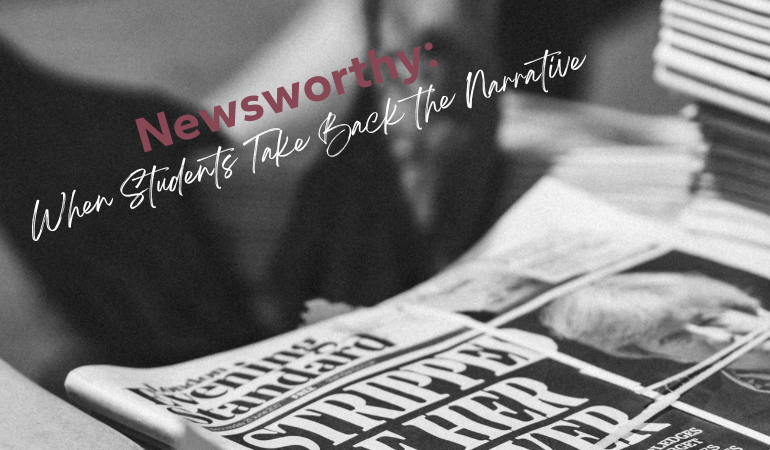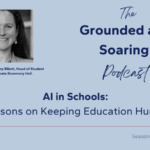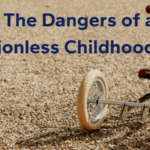In a world where young people are constantly targeted by algorithms, surrounded by misinformation, and often dismissed as passive consumers, learning to be a critical, confident creator isn’t just a nice-to-have—it’s essential.
At this critical age, teenagers are particularly vulnerable to misinformation, disinformation, and negotiable facts.
That’s why the Junior High Journalism Guild matters so much.
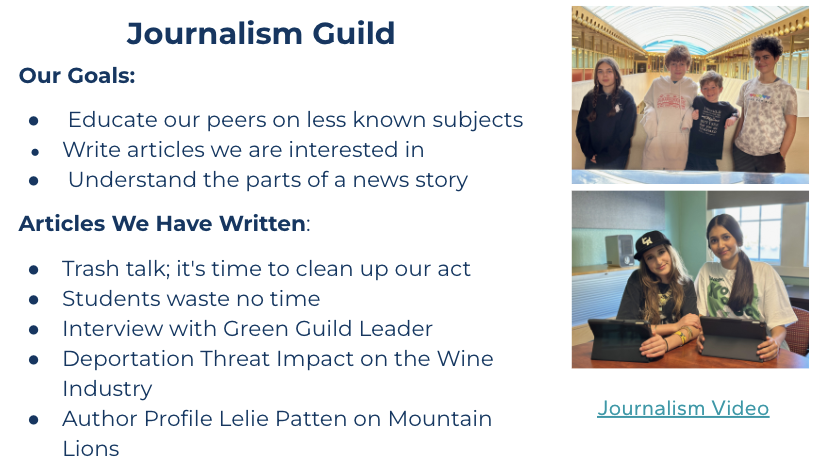
They also learned that negative stories are often deemed more important than positive ones, an insight that sparked conversations about how news affects the way we see ourselves and our world.
They visited the Civic Center Library to explore newspapers and periodicals, and they didn’t just find inspiration—they found questions. What’s worth paying attention to? Who decides what gets told? And what’s missing?
From those questions came action. Students researched, conducted interviews, edited, and collaborated to publish The Golden Eagle, their own student newspaper.
Some wrote about a guest speaker in the biology class. Others focused on local environmental issues or profiles of people in their communities. And when they needed photos or layout support or someone to record an audio version of a story—they didn’t wait for someone else to do it. They helped one another. They made it happen — as you can see below:
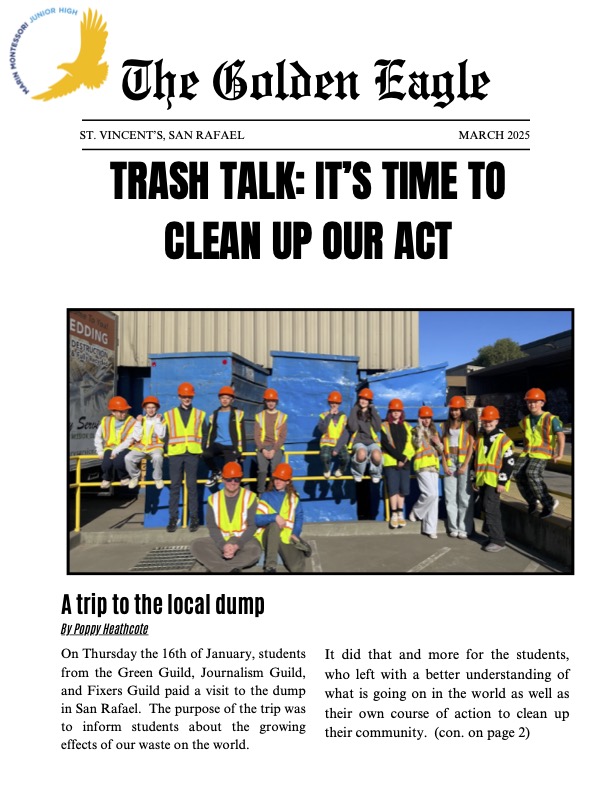
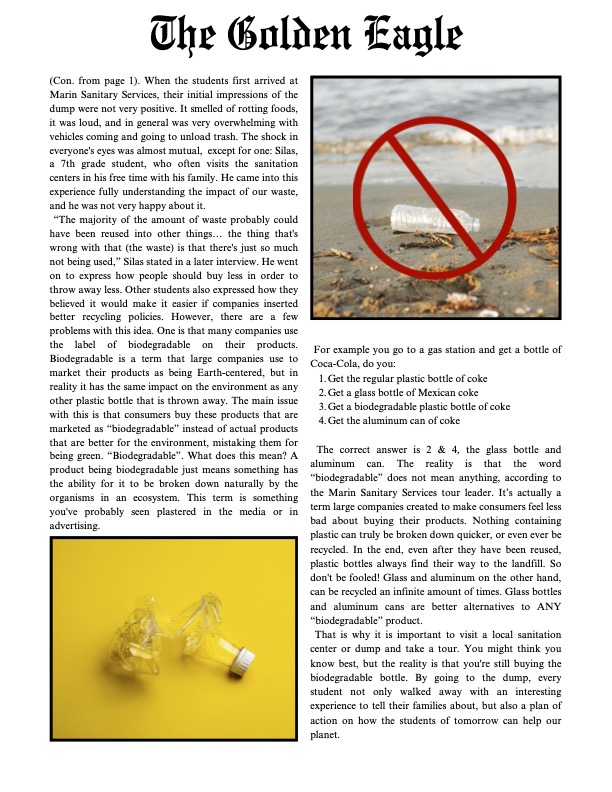
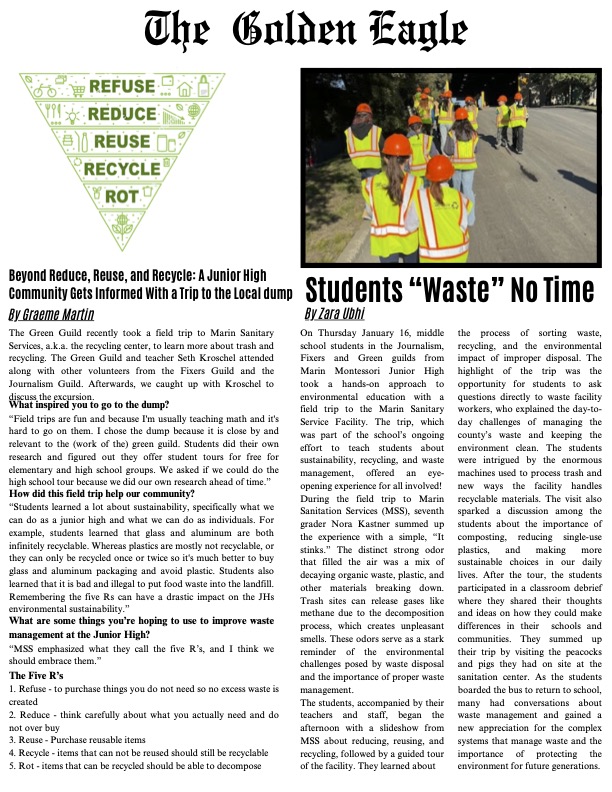
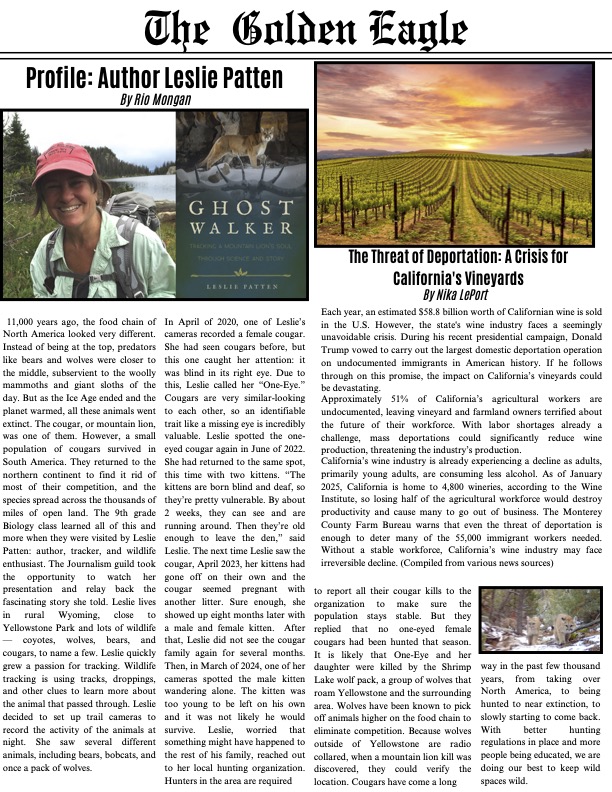
It was, in every way, a Montessori education at work: student-driven, socially conscious, intellectually rigorous, and emotionally meaningful.
This was journalism in its most empowering form—not a performance for adults, but a practice of expression, connection, and purpose.
In an era when youth voices are too often filtered, simplified, or drowned out, these students were learning something far more important than just how to write a headline. They were learning how to think for themselves, ask real questions, and take ownership of their voice.
As one student put it, seeing classmates sit down to read a newspaper they had made themselves—full of their voices, their questions, their discoveries—was a reminder that young people don’t just need safe spaces to learn. They need real opportunities to be heard.
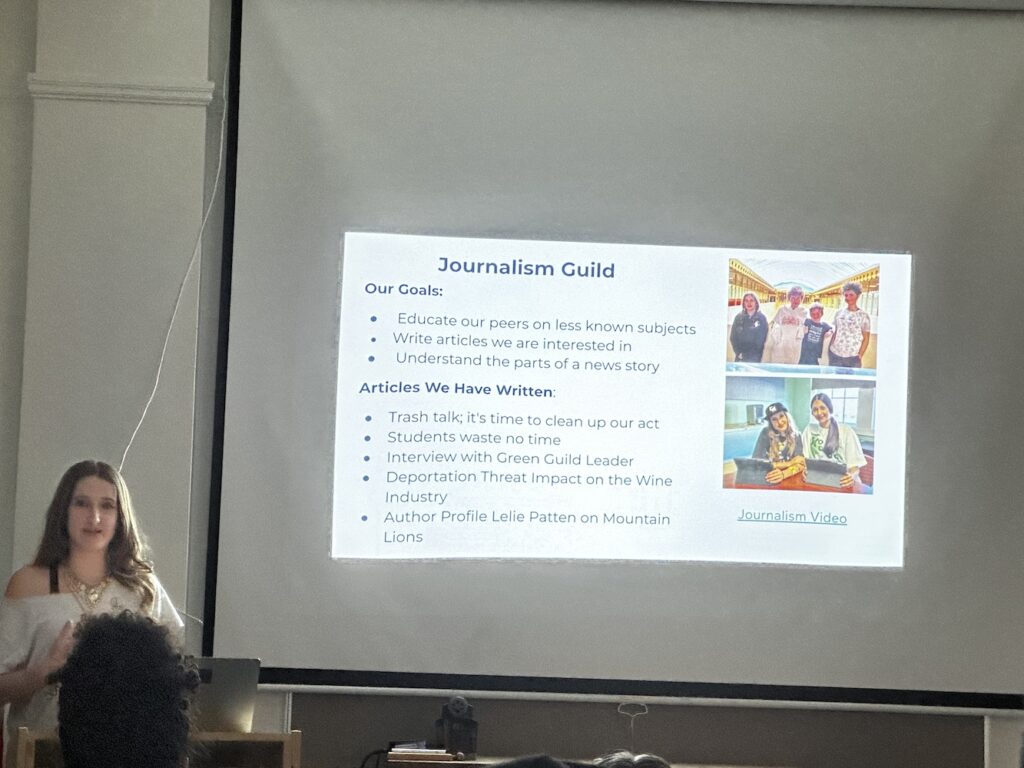
The Journalism Guild recently presented their project to the school, sharing their process, their takeaways, and their views on the importance of journalism today.
One student also read her article aloud. Click on the image below to hear it in her own voice.
Student Reflections:
“My words are powerful. People may not think something they say can be that important, but it can. Your words can be held against you in a court of law or even in a friendship. You never know what people will do with what you say. You should think about what you say—and not just say the first thing that comes to mind. That’s the biggest lesson I learned in the Journalism Guild.”
Graeme, 8th Grader
“Designing the newspaper included picking a template, fitting in all the articles and images, and then printing. This side of journalism was hard, but also really interesting—thinking about it from a design angle rather than just writing my article. Sharing it during Guild Presentation felt a little vulnerable, because I had created it, but I also felt recognition from the community.”
Nika, 7th Grader
“For my newspaper article, I did a profile on an author who visited our school’s biology class—Leslie Patten. It was a lot of fun to sit in on a class I don’t usually attend, take notes on the presentation, and later connect her story back to our community.”
Rio, 7th Grader

Minnie McBride is one of the founding faculty members of Marin Montessori School’s Junior High. At the time, the student body was made up of just nine students. A third-generation teacher, Minnie studied environmental science at Oregon State University, earned her teaching credential from Dominican University of California, and recently completed her Master of Science in Education at Dominican as well.


